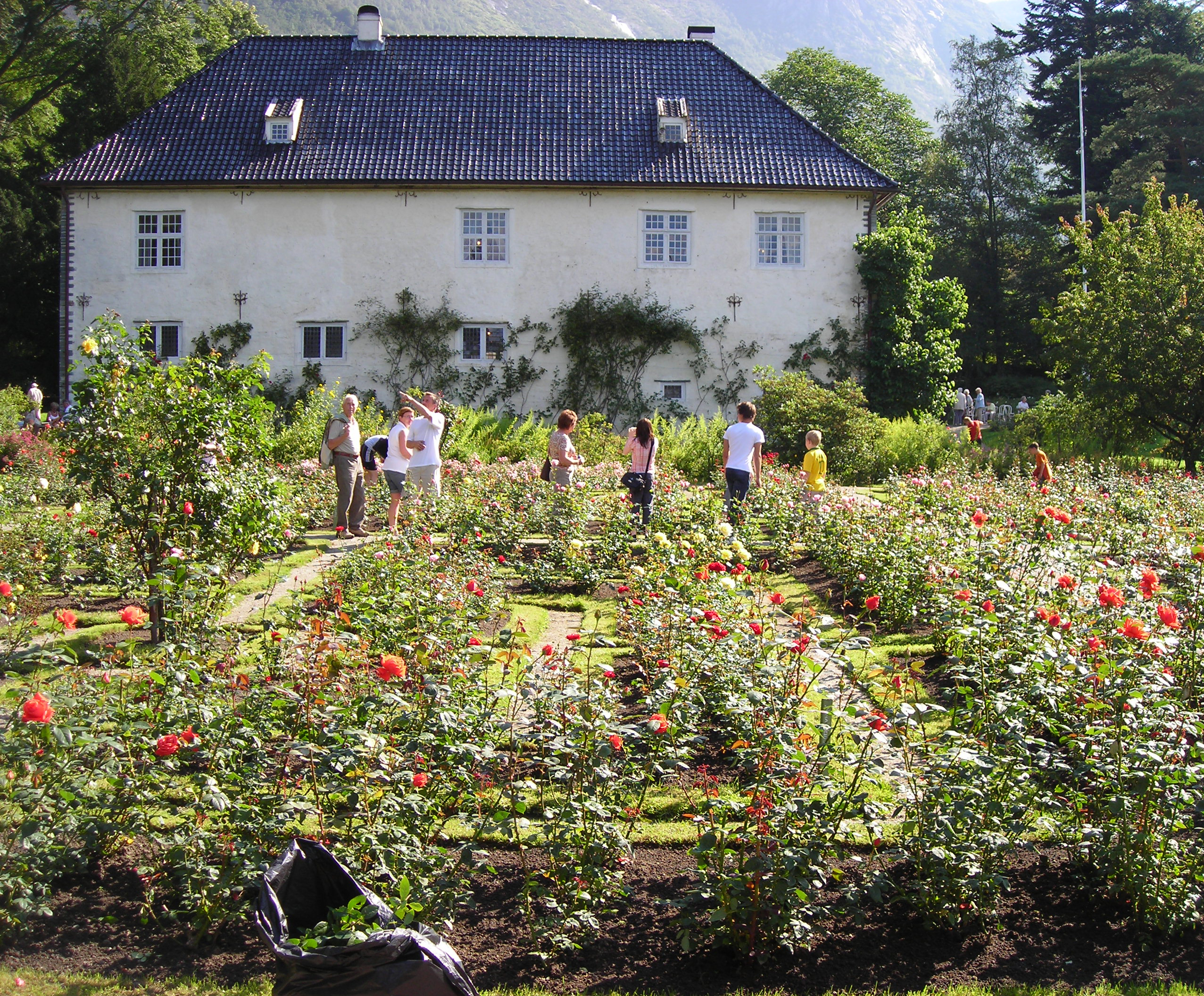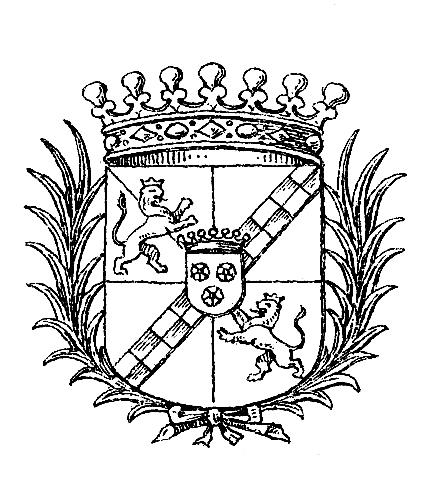Barony Rosendal on:
[Wikipedia]
[Google]
[Amazon]
Barony Rosendal (Norwegian: ''Baroniet Rosendal'') is a historic estate and
 In 1661, Ludwig Rosenkrantz started building his own country house in Rosendal and completed this in 1665.
In 1678, King
In 1661, Ludwig Rosenkrantz started building his own country house in Rosendal and completed this in 1665.
In 1678, King

 The property remained in private ownership until 1927, when the last owner donated it to the
The property remained in private ownership until 1927, when the last owner donated it to the ''Kulturprogram'' (Baroniet Rosendal)
manor house
A manor house was historically the main residence of the lord of the manor. The house formed the administrative centre of a manor in the European feudal system; within its great hall were usually held the lord's manorial courts, communal mea ...
situated in Kvinnherad in Hordaland
Hordaland () was a county in Norway, bordering Sogn og Fjordane, Buskerud, Telemark, and Rogaland counties. Hordaland was the third largest county, after Akershus and Oslo, by population. The county government was the Hordaland County Munici ...
county, Norway
Norway, officially the Kingdom of Norway, is a Nordic countries, Nordic country located on the Scandinavian Peninsula in Northern Europe. The remote Arctic island of Jan Mayen and the archipelago of Svalbard also form part of the Kingdom of ...
. The barony was built in the 17th century by Danish noblemen on the old estate of the Norwegian noble Galte family, the current barony estate making out the historical farms of Hatteberg, Mel and Eik.
History
The history of Rosendal dates back to the 1650s, when the nobleman Ludvig Holgersen Rosenkrantz (1628-1685) of the House of Rosenkrantz came toBergen
Bergen (, ) is a city and municipalities of Norway, municipality in Vestland county on the Western Norway, west coast of Norway. Bergen is the list of towns and cities in Norway, second-largest city in Norway after the capital Oslo.
By May 20 ...
as commissioner of war for the Danish king, Frederick III. At a ball at the fortress of Bergenhus
Bergenhus is a borough of the city of Bergen in Vestland county, Norway
Norway, officially the Kingdom of Norway, is a Nordic countries, Nordic country located on the Scandinavian Peninsula in Northern Europe. The remote Arctic island of ...
he met Karen Axelsdatter Mowatt (1630-1675), sole heiress to the largest fortune in the country at the time. Her father was a great land-owner and had more than 550 farms all over the western part of Norway. They were married in 1658 and were given the farm of Hatteberg in Rosendal as a wedding present.
 In 1661, Ludwig Rosenkrantz started building his own country house in Rosendal and completed this in 1665.
In 1678, King
In 1661, Ludwig Rosenkrantz started building his own country house in Rosendal and completed this in 1665.
In 1678, King Christian V of Denmark
Christian V (15 April 1646 – 25 August 1699) was King of Denmark and Norway from 1670 until his death in 1699.
Well-regarded by the common people, he was the first king anointed at Frederiksborg Castle chapel as absolute monarch since the dec ...
gave the estate the status of a barony Barony may refer to:
* Barony, the peerage, office of, or territory held by a baron
* Barony, the title and land held in fealty by a feudal baron
* Barony (county division), a type of administrative or geographical division in parts of the British ...
- the only one of its kind in Norway. Around 1850, an expansive romantic garden was laid out around the house.
The inhabitants of Rosendal were important people in the cultural life of Norway. Authors Henrik Ibsen
Henrik Johan Ibsen (; ; 20 March 1828 – 23 May 1906) was a Norwegian playwright, poet and actor. Ibsen is considered the world's pre-eminent dramatist of the 19th century and is often referred to as "the father of modern drama." He pioneered ...
, Jonas Lie and Alexander Kielland and painters Hans Gude and Anders Askevold
Anders Askevold (25 December 1834 – 22 October 1900) was a Norwegian painter. His art was characterized by romantic national expression. He was best known for his fjord landscapes from Western Norway.
Biography
Anders Monsen Askevold was ...
visited Rosendal often. The musicians Edvard Grieg
Edvard Hagerup Grieg ( , ; 15 June 18434 September 1907) was a Norwegian composer and pianist. He is widely considered one of the leading Romantic music, Romantic era composers, and his music is part of the standard classical repertoire worldwid ...
and Ole Bull
Ole Bornemann Bull (; 5 February 181017 August 1880) was a Norwegian virtuoso violinist and composer. According to Robert Schumann, he was on a level with Niccolò Paganini for the speed and clarity of his playing.
Biography
Background
Bull was ...
were guests here. Often there were concerts in Rosendal, a tradition which is still kept alive.
House of Rosenkrantz
Ludvig Holgersen Rosenkrantz received a baronial patent (''Friherrepatent'') in 1678 from King Christian V. The successive barons were: * 1658–1685 Baron Ludvig Rosenkrantz (1628-1685) * 1685–1691 Baron Christian Rosenkrantz * 1691–1723 Baron Axel Rosenkrantz (1670-1723)House of Londemann of Rosencrone
In 1749, Bishop Edvard Londemann of Rosendal received a patent of nobility under the name Londemann af Rosencrone. In 1773 he received a baronial patent, and in 1782 was also created a count. The holders of this title were: * 1745–1749 Count Edvard Londeman Rosencrone (1680-1749) * 1749–1811 Count Marcus Gerhard Londemann de Rosencrone (1738-1811)
House of Hoff Rosencrone
A member of the Hoff family in the Bohemian nobility was naturalized as a Danish-Norwegian nobleman in 1778. One Major Hans Wentzel Hoff (1636-1713), emigrated to Denmark in 1659. His son, Lieutenant Colonel Christian Hoff (1690-1746), married Maria Margrethe Londemann of Rosencrone (1711–62), daughter of the titular bishop Edvard Londemann of Rosencrone (1680-1749), who had founded the ''fideikommiss'' of Rosendal. Christian Hoff was the grandfather of Major Christian Henrik Hoff (1768-1837) who inherited the barony of Rosendal, and in 1813 was created a Baron with the title of Hoff Rosencrone. His children were baroness Edvardine Reinholdine Hoff Rosenkrone (1820-1901), who married Hans Christian Weis (1811–82); Marcus Gerhard Hoff Rosenkrone of Rosendal (1823–96); and Hermann Reinhold Hoff Rosenkrone of Rosendal (1829-1900). The two brothers were not Norwegian barons, since they were born after 1821, but were still Danish barons. * 1811–1837 Baron Christian Henrik Hoff Rosencrone (1768-1837) * 1837–1896 Marcus Gerhard Hoff Rosenkrone to Rosendal (1823-1896) * 1896–1900 Hermann Reinhold Hoff Rosenkrone to Rosendal (1829-1900)House of Weis-Hoff-Rosencrone
Baroness Edvardine Reinholdine Hoff-Rosencrone (1820–1901) daughter of baron Christian Henrik Hoff-Rosencrone, married the doctor and later state councilor Hans Christian Weis. She inherited the estate when her little brother died in 1900, Edvardine died the next year. Their oldest son doctor Christian Weis-Hoff-Rosencrone inherited the estate next. * 1902–1916 Christian Weis-Hoff-Rosencrone (1850-1916) * 1916–1927 Edvard Weis-Hoff-Rosencrone (1855-1927) * 1927–1927 Clara Marie Gædeken née Weis-Hoff-Rosencrone (1845-1934)Baroniet Rosendal museum
 The property remained in private ownership until 1927, when the last owner donated it to the
The property remained in private ownership until 1927, when the last owner donated it to the University of Oslo
The University of Oslo (; ) is a public university, public research university located in Oslo, Norway. It is the List of oldest universities in continuous operation#Europe, oldest university in Norway. Originally named the Royal Frederick Univ ...
. The manor is now operated as the Baroniet Rosendal museum. The museum offers valuable information about an important period of Norwegian history.
A guided tour of the manor takes visitors through the different periods of occupation from 1665 up to 1930. The oldest restored rooms are still decorated as they were in the early 19th century. The garden is often referred to as the most magnificent Victorian garden in Norway. Among other things around 2000 roses in bloom can be experienced here from June to November.References
Related reading
*Jorn Oyrehagen Sunde (2009) ''From a Shetland Lairdship to a Norwegian Barony: The Mouat Family and the Barony of Rosendal'' (Shetland Heritage Publications)External links
* {{Coord, 59, 59, 24, N, 6, 1, 45, E, type:landmark_region:NO, display=title Palaces in Norway Manor houses in Norway Buildings and structures of the Rosenkrantz family Kvinnherad